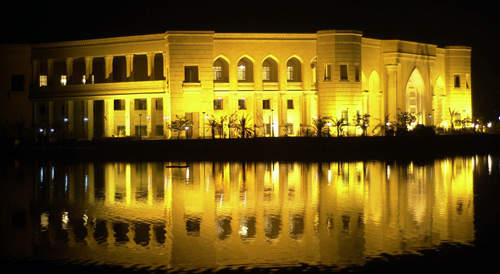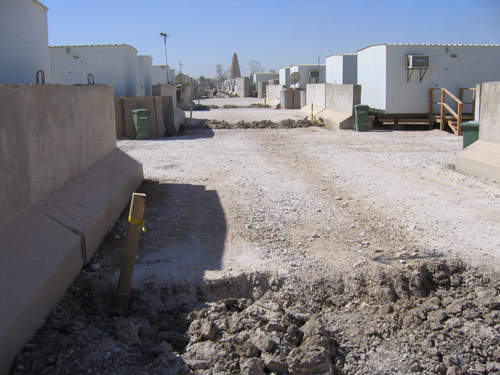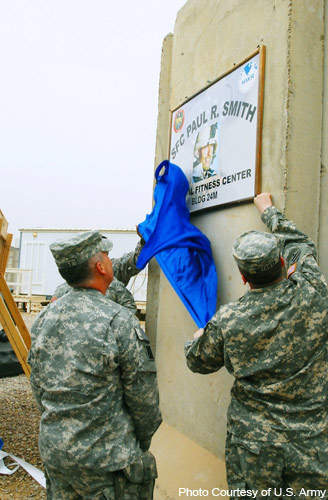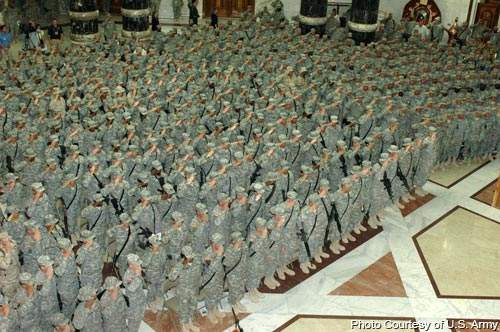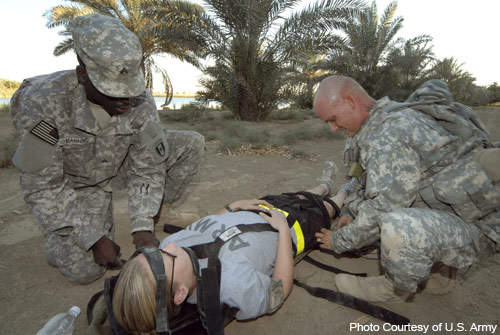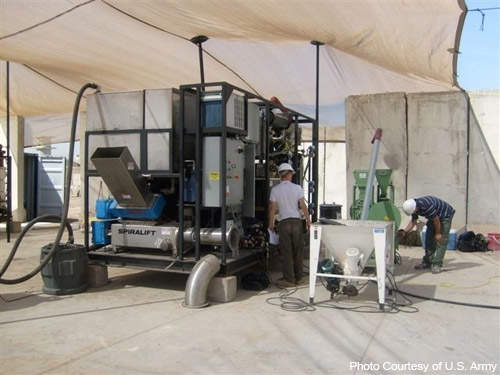Camp Victory in Baghdad, Iraq is a US-led coalition army base situated at a distance of around 5km in the airfields of Baghdad International Airport. The base has been used since the beginning of the Iraq War, also known as the Second Gulf War or Operation Iraqi Freedom, in March 2003. Al Faw Palace – located on the base – is the army’s headquarters.
Camp Victory is one of the main and largest bases for US Army troops outside the US. It can handle about 14,000 troops. In September 2007, a rocket attack by the insurgents on Camp Victory claimed the lives of two personnel and injured another 38 people.
The base is named after the Victory Corps (V Corps) of Germany who first occupied the region in April 2003. Camp Victory was given the Arabic name Camp Al-Nasr as a friendly connotation to liberated Baghdad properties in September 2004.
Camp Victory is the primary component of the Victory Base Complex (VBC), a cluster of US military surrounding the airport. Other camps that make up the VBC are Camp Liberty (formerly known as Camp Victory North), Camp Striker and Camp Slayer.
The 277th Engineer Company has been working on the resurfacing of the Western Bypass Road, which connects Camp Victory and Camp Liberty from April 2009 to relieve the congestion. The road is used to transport fuel and water by the military security vehicles, supply trucks and standard sport utility vehicles.
Camp Victory base history
The Al Faw Palace was one of 99 palaces constructed during the reign of Saddam Hussein in Iraq. It was built to memorialise the victory of recapturing the Al Faw peninsula, a southern Iraqi town taken over by the Iranians in the first Gulf War. The area surrounding the Al Faw Palace is now known as the International Zone (IZ), formerly Green Zone.
The palace has been the headquarters of the Multi-National Force-Iraq (MNF-I) since 2004 and also serves the joint operations centre (JOC), which controls Operation Iraqi Freedom.
In April 2008 the Camp Victory base deployed a mobile bio-refinery unit developed to transform waste into fuel. The waste generated by the troops at Camp Victory was earlier hauled by hiring local contractors, which was a concern of safety and security to the army.
The $2.3m tactical garbage to energy refinery (TGER) was developed by the US Army Research, Development and Engineering Command (RDECOM) in collaboration with Purdue University researchers, Edgewood Chemical Biological Center and Defense Life Sciences.
Camp Victory design and construction
In 2004 the Camp Victory base was renovated by the soldiers of C Company from the 389th Engineer Battalion. The fields surrounding the base area on about 60-acres were cleared during the renovation. The work included clearing and levelling the ground and laying gravel for free vehicle movements to enable construction.
KBR, formerly Kellogg Brown and Root, was the main contractor involved in the construction of the base. The scope of work included trucking in modular buildings for living and administrative purposes with a range of amenities.
US soldiers and Iraqi contractors built a 40ft-wide road with around 850t of asphalt in September 2003 to reduce traffic congestions in Camp Victory. The camp was built by Iraqi workers with a tent city for a troop of around 12,000 soldiers.
Camp Victory garrison facilities
XVIII Airborne Corps were deployed at the Camp Victory base from February 2008 to March 2009 and since it has been occupied with I Corps. In April 2008, a new fitness centre, Paul R. Smith Physical Fitness Centre, was dedicated to the army. The centre serves Camp Victory residents and the surrounding army bases.
Camp Victory has two morale, welfare and recreation (MWR) facilities near Dodge City, Building 51F (Area 51) and the Freedom Village. The MWRs have facilities such as commercial phones, free internet, televisions, air hockey and table tennis indoor sports. World Wrestling Entertainment pays tribute to the troops and has been performing every year at the Camp Victory base since 2003.
TS2 Satellite Communication Services, a private contractor, provides internet services to the base.
A new central Iraq microwave system (CIMS) with around 12 communication towers and fibre-optic cables connecting Camp Victory with other coalition bases and the whole of Iraq was completed in April 2006. Defense Communications and Army Transmission Systems (PM DCATS) for the MNF-I acted as the project manager.
Task Force 62nd Medical Brigade’s 547th Medical Company started a night-shift medical facility by connecting the base to the Golby Troop Medical Clinic in May 2008.
The stone-clad palace with an area of around half a million square feet is marble floored and has villas by the side of the lake. It has a conference centre, 62 rooms, 29 bathrooms and a pool – all of which serve as office space for the army. The Camp Victory base has dining facilities, a Subway, a Pizza Hut and a Green Beans coffee shop. Camp Victory’s post exchange (PX) provides televisions, A/C units, microwave ovens, gas grills, and so on.
Camp Victory protection / security
High walls with pre-constructed security towers surround the Camp Victory base and provide security and ready surveillance maintenance for the former resorts.

